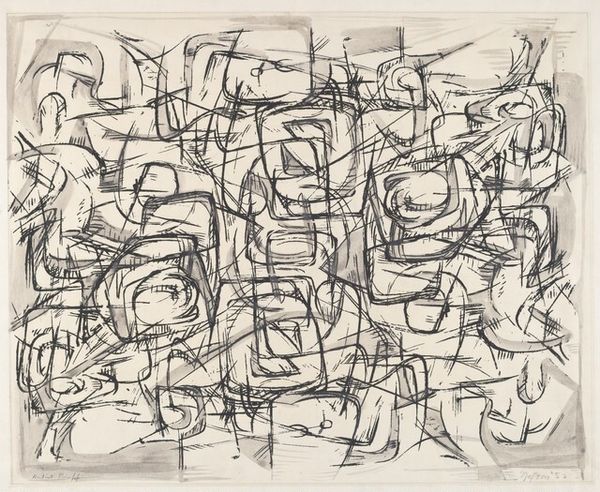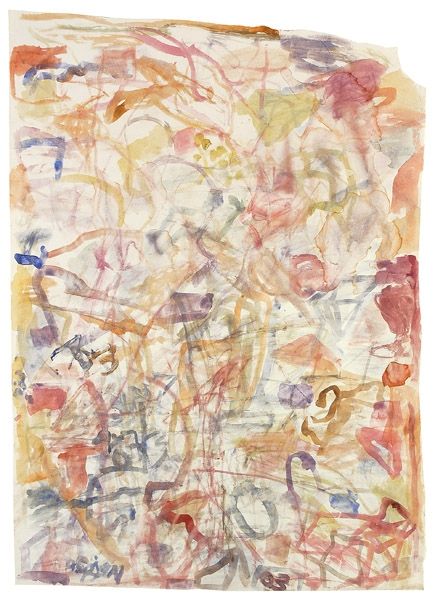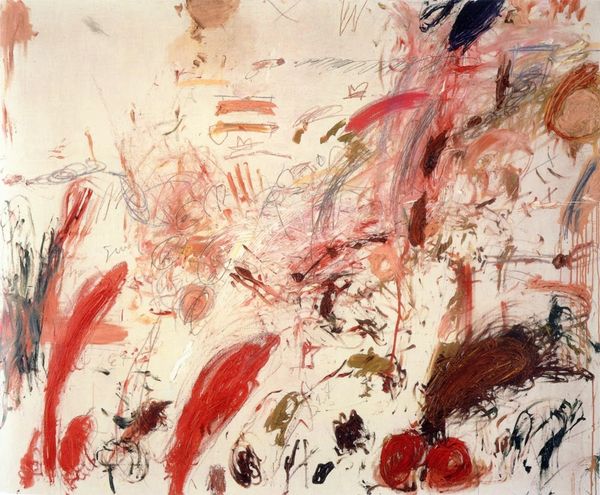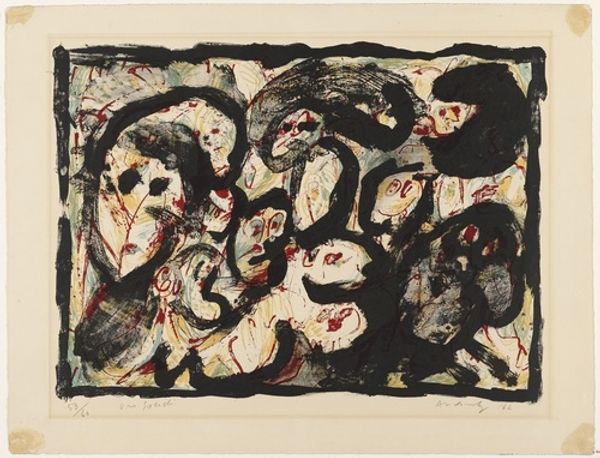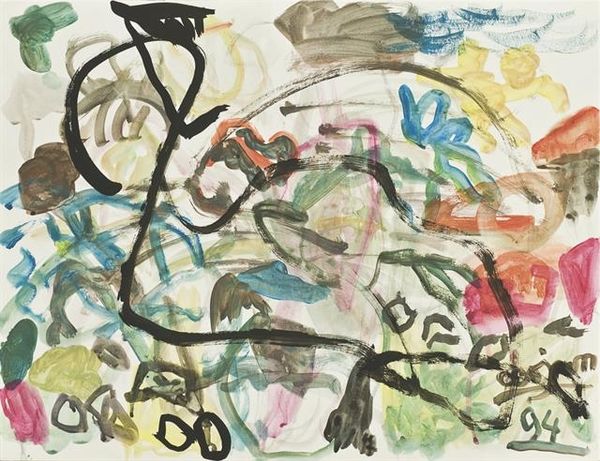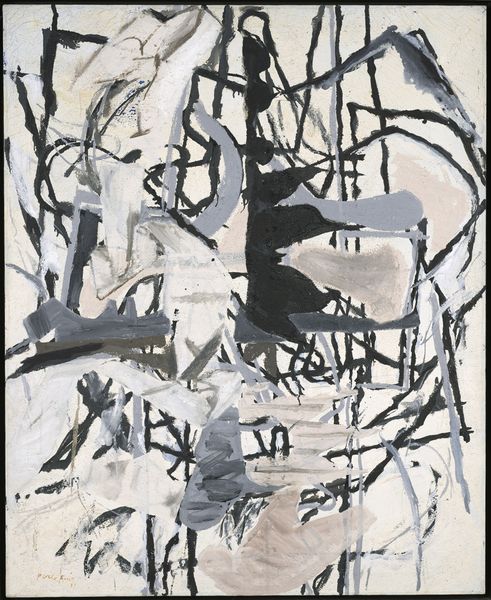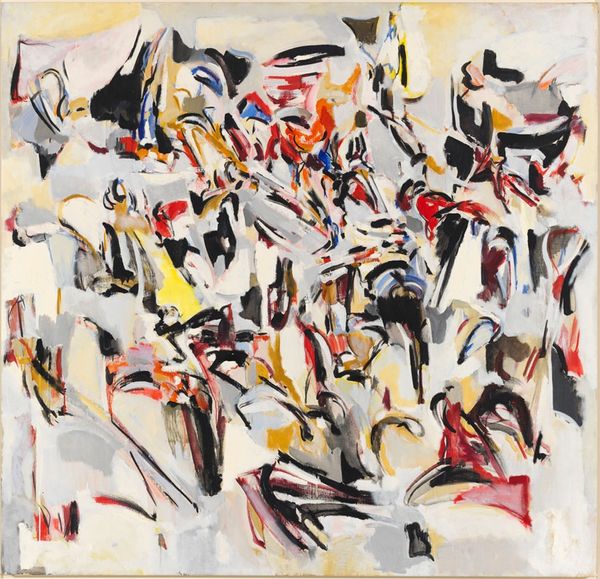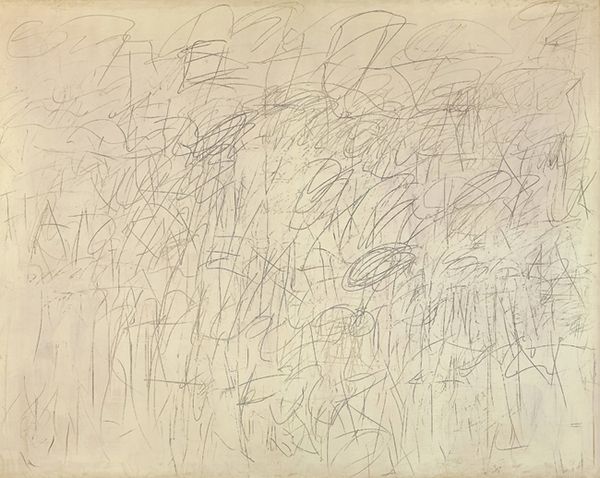
drawing, watercolor, ink
#
drawing
#
ink painting
#
postmodernism
#
abstract
#
watercolor
#
ink
Copyright: Aurel Cojan,Fair Use
Curator: The piece we are looking at today is Aurel Cojan's "Nature Morte" from 1980, an intriguing work rendered in watercolor and ink. It seems to pull from a postmodernist spirit, but I am curious about your initial reaction to the painting's composition. Editor: It evokes a feeling of transience for me, something almost ghostly. The washes of grey and barely-there objects imply a memory fading or something caught in-between states. It seems full of unresolved stories. Curator: Given that it is named "Nature Morte," the title—translated from French, meaning "Still Life"—places this artwork in conversation with the established tradition of still life paintings, even though it deeply abstracts from that subject. When approaching the work in light of the art historical significance of "Nature Morte," how do you see it reflecting on a cultural memory of those traditions? Editor: It almost subverts it, doesn't it? The symbolism traditionally linked with objects—vanitas, reminders of mortality—are here, but obscured. I see them as floating symbols, unburdened from their expected narrative role but, simultaneously, echoing it. The forms resonate with traditional objects in still life painting; however, these forms are blurred beyond complete legibility. Curator: Absolutely. This period saw the heavy rise of theoretical frameworks, questioning power and structure. How could you relate it to broader, intersectional understandings within our contemporary moment, whether it's a post-structuralist or postmodernist position, challenging previous assumptions within artistic tradition? Editor: Considering our time now, surrounded by rapidly changing visual information, the imagery could suggest a feeling of overloaded or disposable culture, always transient, easily forgotten, a continuous death. There is something so essentially human in wanting to capture and categorize what constantly dies around us. Curator: It certainly makes me think about what we value, and what we discard, as a society. Aurel Cojan’s mark is a relevant voice to reflect and reassess our relationship with object and memory. Editor: Yes, "Nature Morte" feels like more than just a still life; it feels like a still moment, an arrested breath. An observation on time, loss, and memory.
Comments
No comments
Be the first to comment and join the conversation on the ultimate creative platform.
